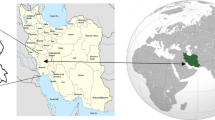Abstract
We aimed to understand and to provide evidence on relationships of the weather as biometeorological and hospital admissions due to hypertension, angina, myocardial infarction and ischemic heart disease in a national setting in recent years that might help indicate when to expect more admissions for health professionals and the general public. This is an ecological study. Ten percent of daily hospital admissions from the included hospitals (n = 1618) across Germany that were available between 1 January 2009 and 31 December 2011 (n = 5,235,600) were extracted from Statistisches Bundesamt, Germany. We identified I11 hypertensive heart disease, I13 hypertensive heart and renal disease, I15 secondary hypertension, I20 angina pectoris, I21 acute myocardial infarction and I25 chronic ischemic heart disease by International Classification of Diseases version 10 as the study outcomes. Daily weather data from 64 weather stations that covered 13 German States including air temperature, humidity, wind speed, cloud cover, radiation flux and vapour pressure were obtained and generated into physiologically equivalent temperature (PET). Two-way fractional-polynomial prediction was plotted with 95 % confidence intervals. Hospital admissions of hypertension, angina, myocardial infarction, heart disease peaked in winter and early spring when PETs were around 0 °C. Admissions had an apparent drop when PETs reached 10 °C. More medical resources could have been needed on days when PETs were around 0 °C than on other days. While adaptation to such weather change for health professionals and the general public would seem to be imperative, future research with a longitudinal monitoring would still be needed.







Similar content being viewed by others
References
Abrignani MG, Corrao S, Biondo GB, Lombardo RM, Di Girolamo P, Braschi A, Di Girolamo A, Novo S (2012) Effects of ambient temperature, humidity, and other meteorological variables on hospital admissions for angina pectoris. Eur J Prev Cardiol 19:342–348
Amiya S, Nuruki N, Tanaka Y, Tofuku K, Fukuoka Y, Sata N, Kashima K, Tsubouchi H (2009) Relationship between weather and onset of acute myocardial infarction: can days of frequent onset be predicted? J Cardiol 54:231–237
Ansari A, Burch GE (1969) Influence of hot environments on the cardiovascular system: a clinical study of 23 cardiac patients at rest. Arch Intern Med 123:371–378
Bayentin L, El Adlouni S, Ouarda TB, Gosselin P, Doyon B, Chebana F (2010) Spatial variability of climate effects on ischemic heart disease hospitalization rates for the period 1989–2006 in Quebec. Can Int J Health Geogr 9:5
Bean WB, Mills CA (1938) Coronary occlusion, heart failure, and environmental temperatures. Am Heart J 16:701–713
Bhaskaran K, Hajat S, Haines A, Herrett E, Wilkinson P, Smeeth L (2009) Effects of ambient temperature on the incidence of myocardial infarction. Heart 95:1760–1769
Ebi KL, Exuzides KA, Lau E, Kelsh M, Barnston A (2004) Weather changes associated with hospitalizations for cardiovascular diseases and stroke in California, 1983–1998. Int J Biometeorol 49:48–58
Epstein SE, Stampfer M, Beiser D, Goldstein RE, Braunwald E (1969) Effects of a reduction in environmental temperature on the circulatory response to exercise in man—implications concerning angina pectoris. N Engl J Med 280:7–11
Goggins WB, Chan EY, Yang CY (2013) Weather, pollution, and acute myocardial infarction in Hong Kong and Taiwan. Int J Cardiol 168:243–249
Hanna JM (1999) Climate, altitude, and blood pressure. Hum Biol 71:553
Hattenhaur M, Neill WA (1975) The effect of cold air inhalation on again pectoris and myocardial oxygen supply. Circulation 51:1053–1058
Höppe P (1999) The physiological equivalent temperature—a universal index for the biometeorological assessment of the thermal environment. Int J Biometeorol 43:71–75
Kriszbacher I, Bódis J, Csoboth I, Boncz I (2009) The occurrence of acute myocardial infarction in relation to weather conditions. Int J Cardiol 135:136–138
Lee JH, Chae SC, Yang DH, Park HS, Cho Y, Jun JE, Park WH, Kam S, Lee WK, Kim YJ, Kim KS, Hur SH, Jeong MH (2010) Korea Acute Myocardial Infarction Registry Investigators. Influence of weather on daily hospital admissions for acute myocardial infarction (from the Korea Acute Myocardial Infarction Registry). Int J Cardiol 144:16–21
Madrigano J, Mittleman MA, Baccarelli A, Goldberg R, Melly S, von Klot S, Schwartz J (2013) Temperature, myocardial infarction, and mortality: effect modification by individual- and area-level characteristics. Epidemiology 24:439–446
Matzarakis A, Mayer H (1996) Another kind of environmental stress: thermal stress. WHO Newsletter 18:7–10
Milo-Cotter O, Adams KF, O’Connor CM, Uriel N, Felker GM, Weatherley B, Vered Z, Cotter G (2007) Acute heart failure associated with high admission blood pressure—a distinct vascular disorder? Eur J Heart Fail 9:178–183. doi:10.1016/j.ejheart.2006.06.004
Modesti PA (2013) Season, temperature and blood pressure: a complex interaction. Eur J Intern Med 24:604–607
Nastos PT, Giaouzaki KN, Kampanis NA, Matzarakis A (2013) Acute coronary syndromes related to bio-climate in a Mediterranean area. The case of Ierapetra, Crete Island, Greece. Int J Environ Health Res 23:76–90
Panagiotakos DB, Chrysohoou C, Pitsavos C, Nastos P, Anadiotis A, Tentolouris C, Stefanadis C, Toutouzas P, Paliatsos A (2004) Climatological variations in daily hospital admissions for acute coronary syndromes. Int J Cardiol 94:229–233
Radišauskas R, Vaičiulis V, Ustinavičienė R, Bernotienė G (2013) The effect of atmospheric temperature and pressure on the occurrence of acute myocardial infarction in Kaunas. Medicina (Kaunas) 49:447–452
Sabetghadam S, Ahmadi-Givi F (2014) Relationship of extinction coefficient, air pollution, and meteorological parameters in an urban area during 2007 to 2009. Environ Sci Pollut Res Int 21:538–547
Shaposhnikov D, Revich B, Gurfinkel Y, Naumova E (2014) The influence of meteorological and geomagnetic factors on acute myocardial infarction and brain stroke in Moscow. Russia Int J Biometeorol 58:799–808
Shiue I, Matzarakis A (2011) When stroke epidemiology meets weather and climate: a heat exposure index from human biometeorology. Int J Stroke 6:176
Shiue I, Muthers S, Bearman N (2014) The role of cold stress in predicting extra cardiovascular and respiratory admissions. Int J Cardiol 172:e109–e110
Shiue I, Perkins DR, Bearman N (2015) Inverted U-shape relationships of the weather as biometeorological and hospital admissions due to carcinoma in situ and benign neoplasm in Germany in 2009–2011. Environ Sci Pollut Res Int 22(12):9378–99
Wichmann J, Ketzel M, Ellermann T, Loft S (2012) Apparent temperature and acute myocardial infarction hospital admissions in Copenhagen, Denmark: a case-crossover study. Environ Health 11:19
Wichmann J, Rosengren A, Sjöberg K, Barregard L, Sallsten G (2013) Association between ambient temperature and acute myocardial infarction hospitalisations in Gothenburg, Sweden: 1985–2010. PLoS One 8, e62059
Wijnbergen I, Van’t Veer M, Pijls NH, Tijssen J (2012) Circadian and weekly variation and the influence of environmental variables in acute myocardial infarction. Neth Heart J 20:354–359
World Health Organisation (WHO). International Classification of Diseases (ICD) Version 10. 2009. http://apps.who.int/classifications/apps/icd/icd10online/ (Accessed on 1 July, 2014)
Acknowledgments
Ivy Shiue was supported by the EU FP-7 project, Data without Boundaries (grant no. 262608). The authors would also like to thank Mr Rafael Beier and other German colleagues at Statistisches Bundesamt for their professional assistance in coordinating and checking data and hosting the research visit for the purpose of data analysis.
Conflict of interest
None.
Author information
Authors and Affiliations
Corresponding author
Additional information
Responsible editor: Philippe Garrigues
Rights and permissions
About this article
Cite this article
Shiue, I., Perkins, D.R. & Bearman, N. Hospital admissions of hypertension, angina, myocardial infarction and ischemic heart disease peaked at physiologically equivalent temperature 0 °C in Germany in 2009–2011. Environ Sci Pollut Res 23, 298–306 (2016). https://doi.org/10.1007/s11356-015-5224-x
Received:
Accepted:
Published:
Issue Date:
DOI: https://doi.org/10.1007/s11356-015-5224-x




